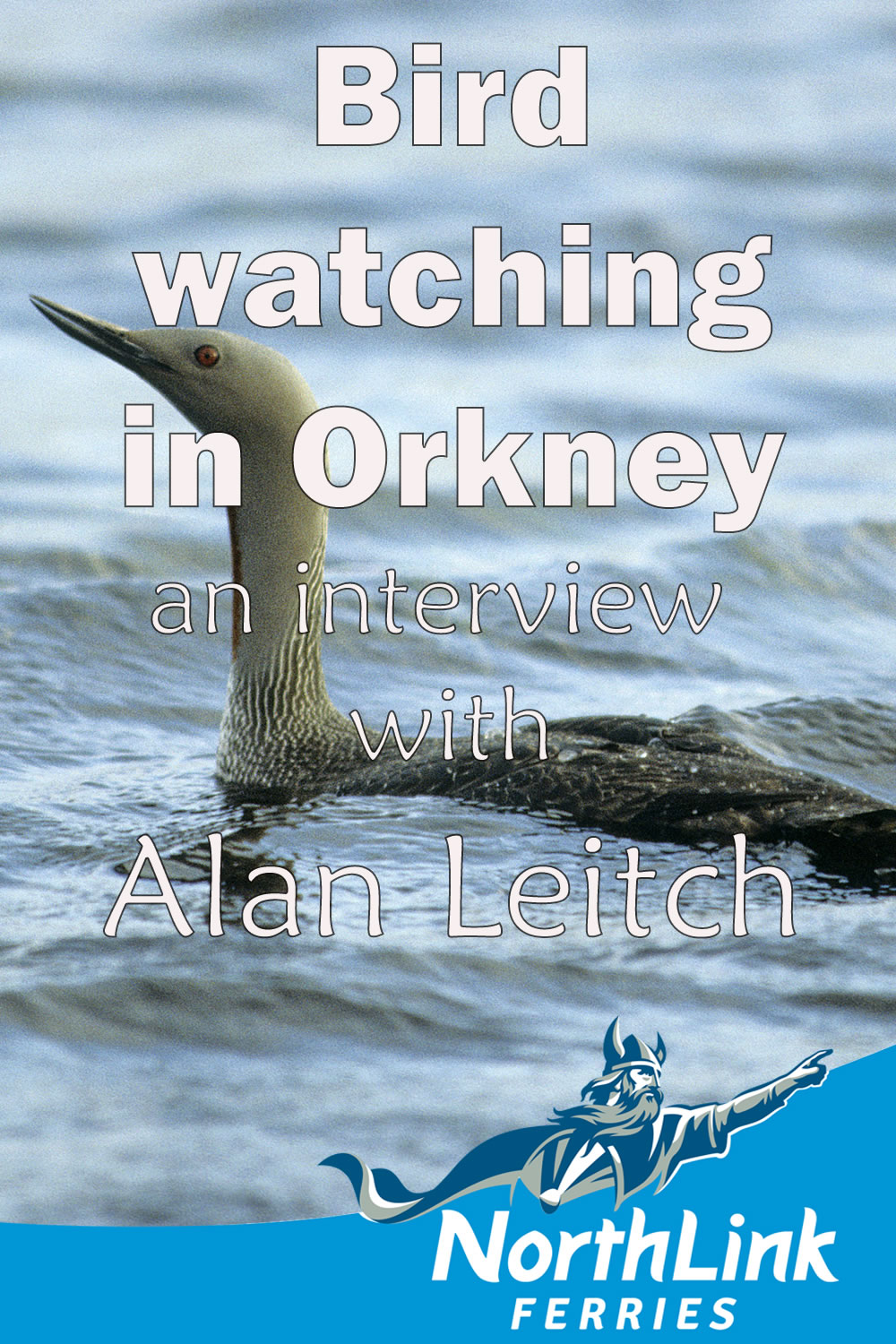Birdwatching in Orkney – an interview with Alan Leitch
When imagining birdwatching, one pictures folk hiding in long grass, peering through powerful binoculars. However, the truth is very different in Orkney. Short eared owls can fly along roadside verges as commuters travel to work, and long tailed ducks can be found in the Peedie Sea in the centre of Kirkwall! Alan Leitch, the RSPB Site Manager of Orkney Reserves offers a fascinating insight (and an indispensable holiday guide) to the amazing birds you can easily see in Orkney!
“My particular favourite time of the year is late April, early May where you still have some of the wintering birds, with better weather to view them.”
Q. Why did you start to work for the RSPB?
A. I’ve been working for RSPB for 21 years. I started as volunteer at Loch of Strathbeg when I was still at school. Then a few years later I started working as a research assistant based in East Anglia; sound recording and monitoring the UK Bittern population. I came to Orkney in October 2007 from Kirriemuir where I was Site Manager, Tayside Reserves.
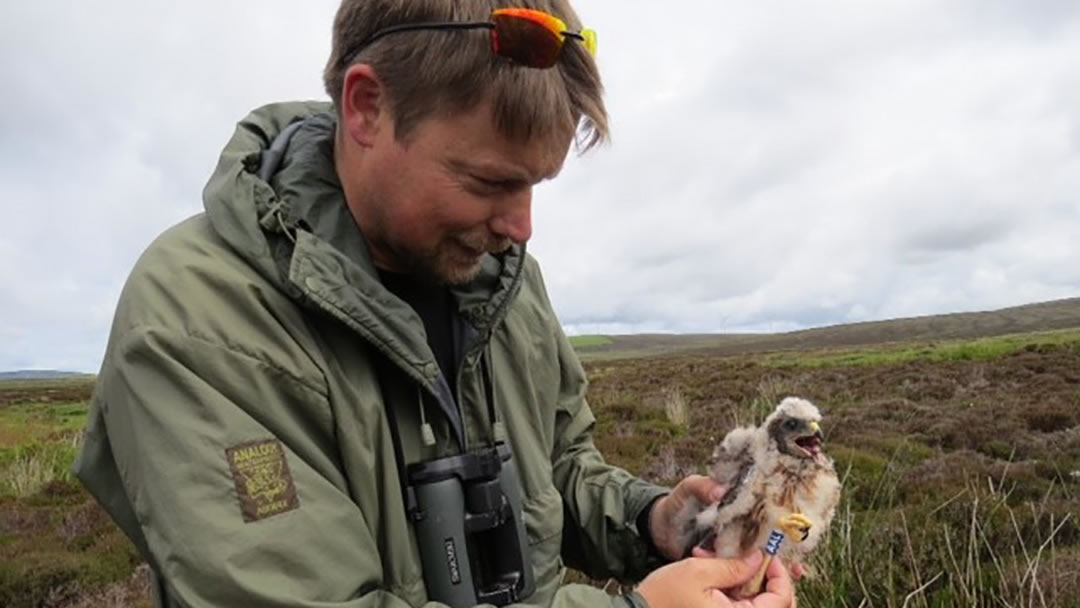
Q. What’s the best thing about your job as Site Manager, Orkney Reserves?
A. I get to work in some of the most beautiful parts of the Orkney landscape and meet a diverse range of people from Hoy to Papa Westray and out the east to Copinsay. I do seem to spend more time in the office as well but I can put up with that when I get the chance to go to these great places and meet different folk!
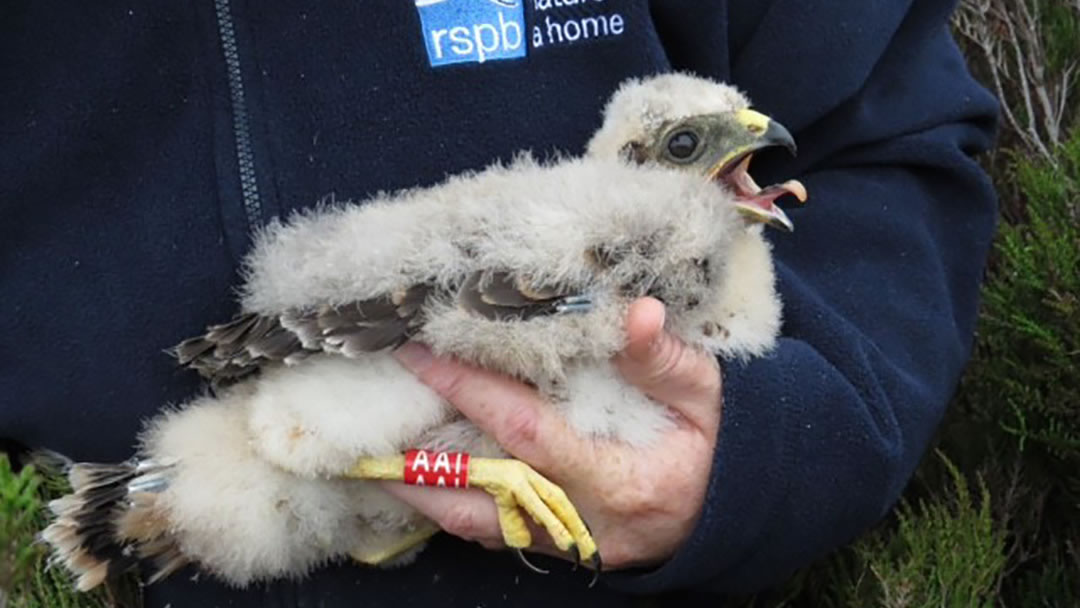
Q. Orkney is well known as a good place for bird watchers – why is this?
A. It’s probably primarily because of the diverse range of habitats that are found in Orkney, from sea cliffs, to wetlands, farmland, the high tops on Hoy and the rolling moorland on the mainland. That’s why we have such a good range of not just birdlife but wildlife on the islands.
Q. How many RSPB reserves are there in Orkney?
A. There are 13 in total.
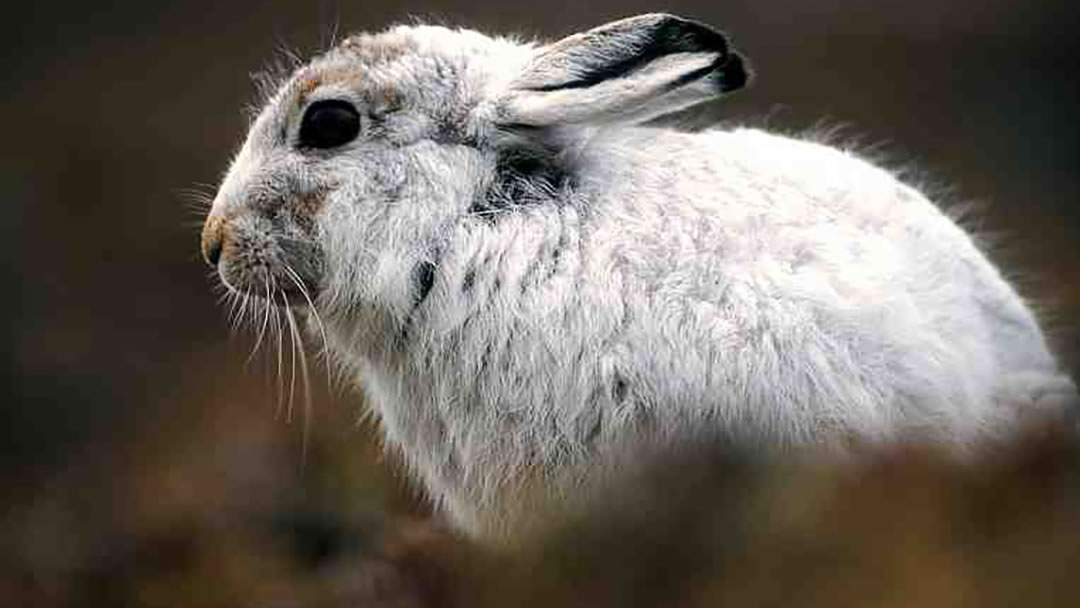
Q. Which is your favourite Orkney bird reserve and why?
A. I would hate to choose from them, but I do have sites I prefer to go to. I’ll cop out and say Hoy because that was the last one I visited. I spent the day in the Hoy reserve last weekend, walking across parts of it I had never been to before – watching white mountain hares (pictured above) on a brown landscape as there’s been very little snow this year – and Hoy has got a spectacular landscape, more like the mountainous landscape of mainland Scotland – quite different from the rest of Orkney. I also have a soft spot for Copinsay!
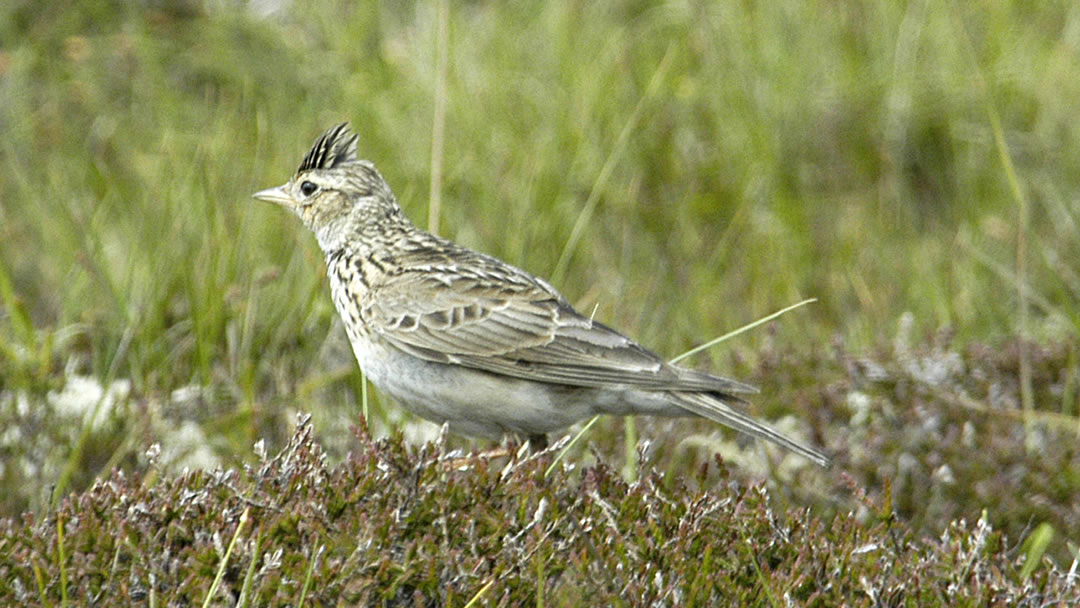
Q. What is the best time of year to see birds in Orkney?
A. Really any time of the year as there are different types of birds to be seen at different times of the year. My particular favourite time of the year is late April, early May where you still have some of the wintering birds, with better weather to view them. You also have the spring/summer migrants arriving and of course the birds that breed on Orkney are starting to gear up – you’ve got the skylarks (pictured above) singing, the curlews bubbling – everything’s just starting to erupt into the breeding season – for me it’s that time of the year, I love to see the first lapwing (pictured below) chicks and the quality of the light in Orkney in April/May is outstanding.
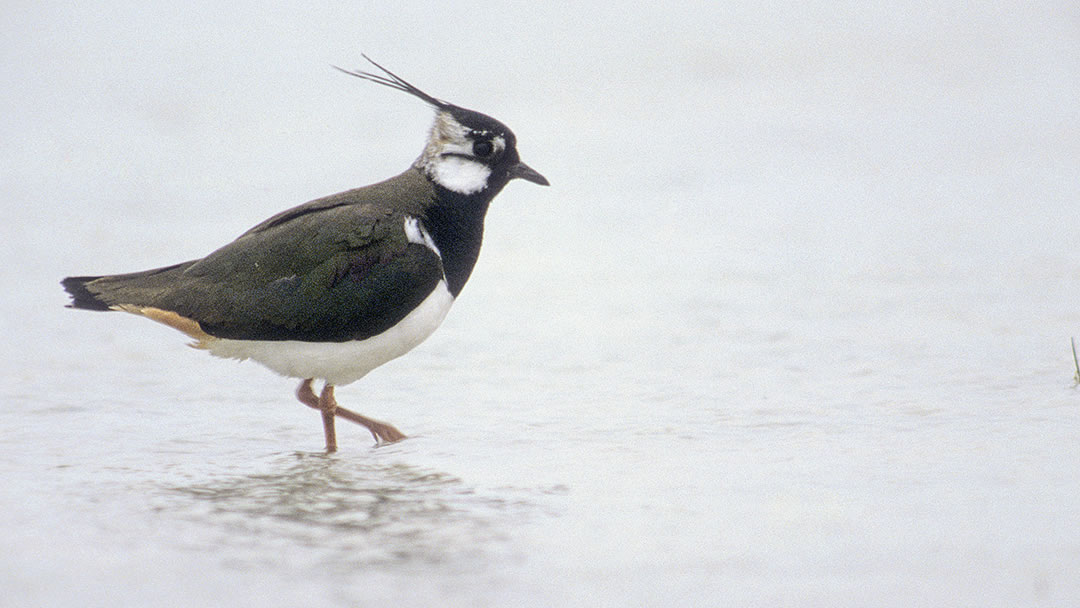
Q. Have there been any rare visitors recently?
A. Yes – in fact there’s three north American ducks here at the moment which is probably an indication of where our weather’s been coming from of late – a ring necked duck and a green winged teal at loch of Skaill, and a blue winged teal (which has only turned up in Scotland around 50 times previously) at the Shunan in Harray.
We have a few Iceland gulls (pictured below) and glaucous gulls which occur in small numbers in the winter months – they come from Iceland and Greenland though these are annual unlike the ducks I mentioned before.
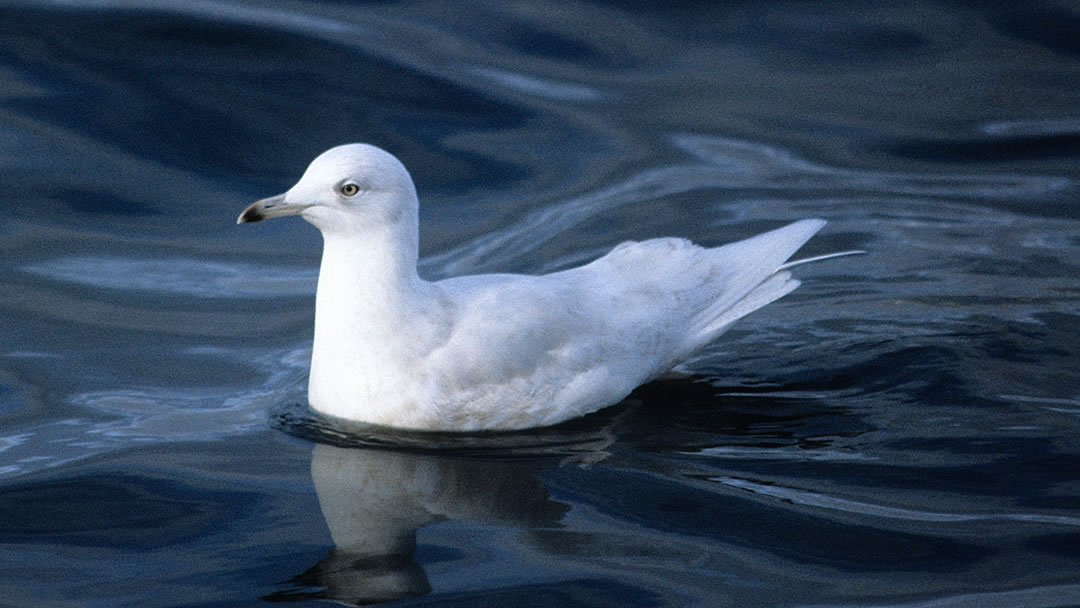
Back in November we had a red breasted goose which was a first for Orkney – that’s a bird that breeds in the east up in the Taymyr Peninsula and tends to winter around the Black Sea area, Bulgaria – this bird is globally quite rare and it’s very unusual to get one this far west. However, they are also kept in wild fowl collections so you’re never quite sure where this particular bird originated from – still a very bonnie goose to see in amongst the grey greylags!
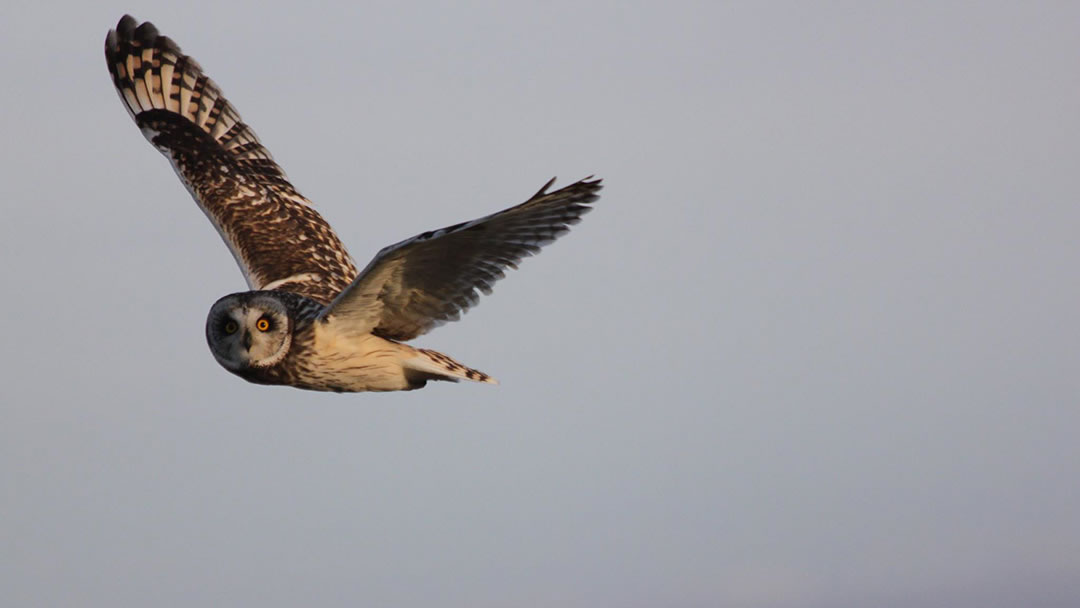
Q. I’m not very knowledgeable about birds, what special birds can I easily see in Orkney?
A. Birds that are mainly associated with Orkney are hen harrier, short eared owls (pictured above), red throated divers and curlews. Short eared owls and hen harriers (pictured below) can be found in similar sort of habitats, rough grassland verges for feeding and finding Orkney voles, small birds, rabbits and the moorlands for breeding.
We are very fortunate in Orkney where people can drive around, in their day to day lives, commuting to work and see these birds.
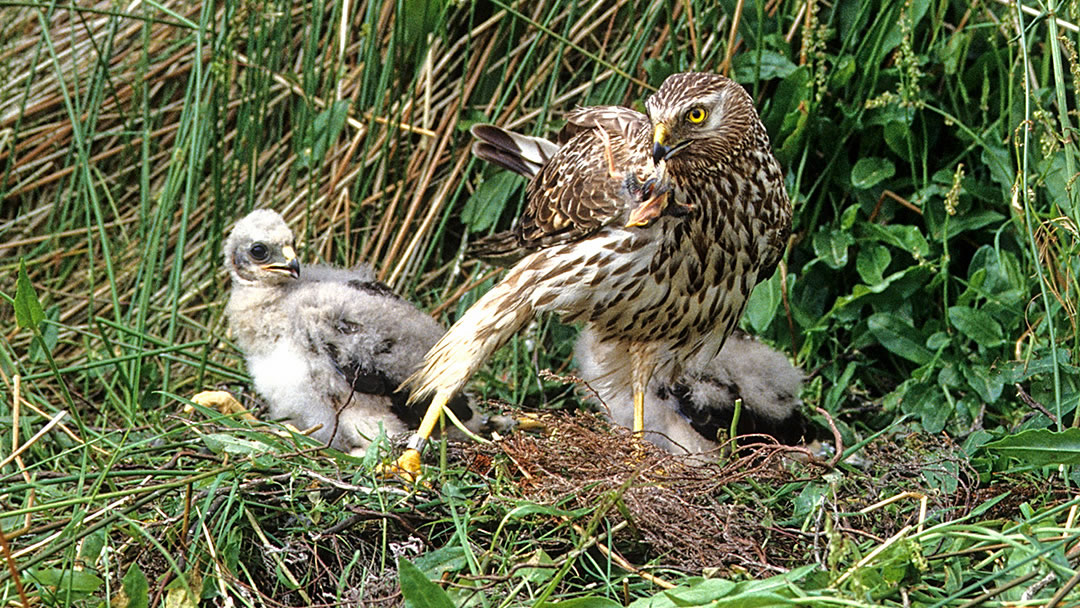
It’s obviously better if you go across the moorland areas like the Lyde road or the Hillside road up between Dounby and Evie, but on Orkney you can see them practically anywhere. They are a bit harder to come by in the winter months, especially short eared owls, because they become nocturnal partly because we have more hours of darkness than we do daylight.
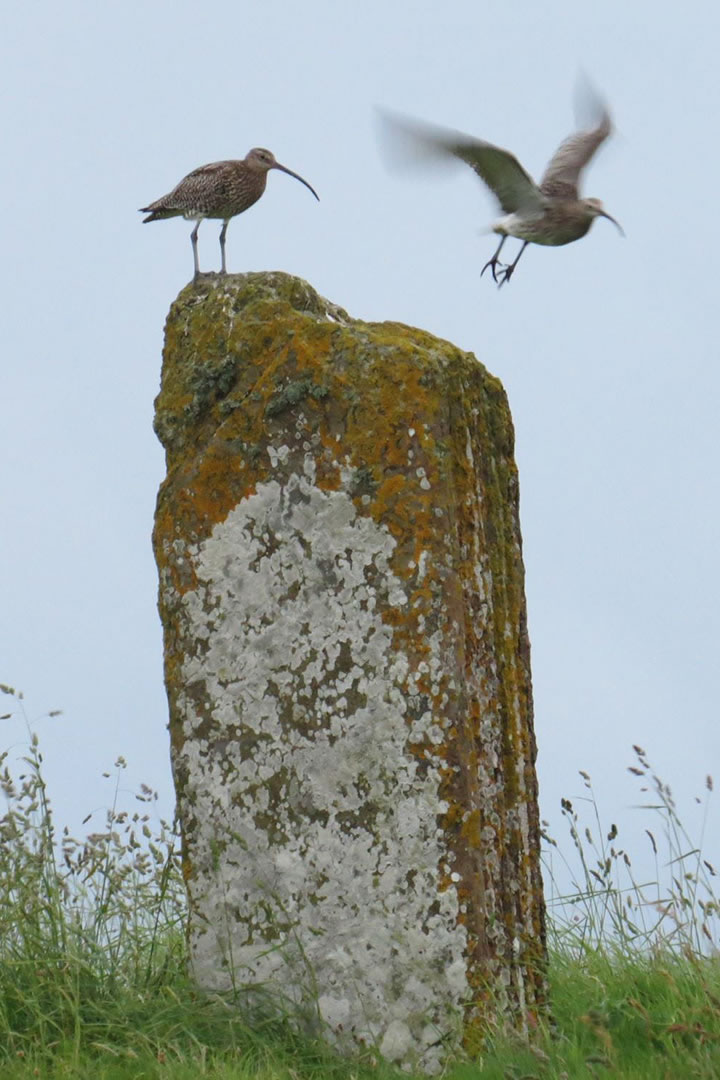
We are very fortunate to have curlews (pictured above) – a widespread breeding and wintering species across Orkney. The males perform bubbling song flights over our road networks making them highly visible, later in the season care is required as chicks can be found wandering on the roads, while anxious parents watch from fence posts, in late summer large flocks congregate in newly cut silage fields to benefit from the abundance of invertebrates exposed. This species is suffering significant declines across its range in the UK, which is cause for concern.
In terms of red throated divers (pictured below) – the hide’s not open yet but there’s a pair that breed up at Lowries water in Birsay moors. The Birsay Moors hide opens in April.
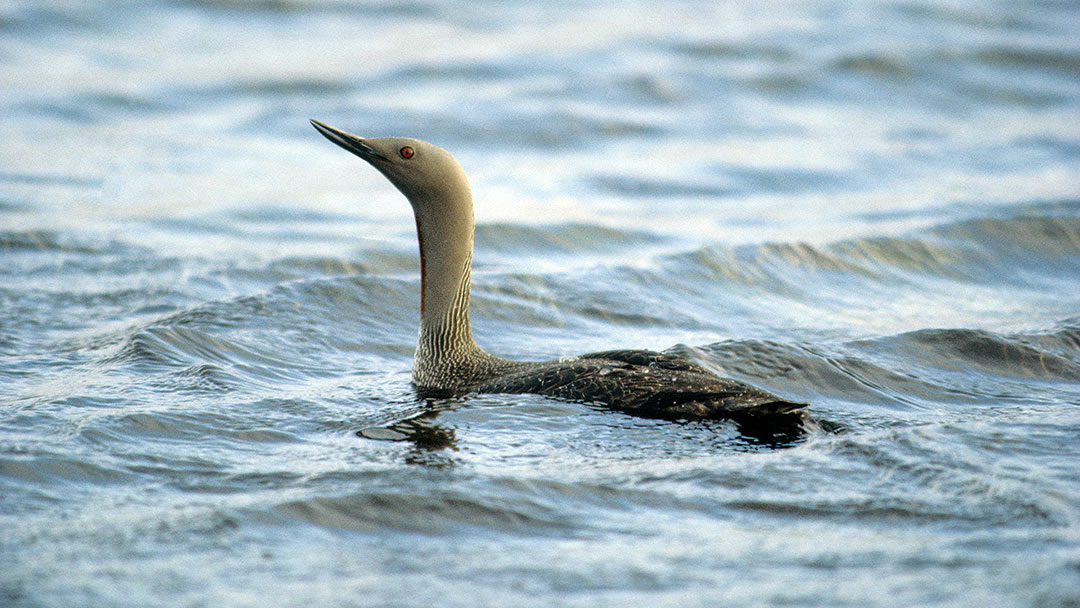
Q. Where would you recommend I go, as an amateur bird watcher?
A. The RSPB have got three hides – we’ve got the Loons hide near Marwick Bay and we have a new feature as of spring 2015, the Loons listening wall. People can sit and observe the wetlands that’s laid out in front of you where there will be all sorts of really nice species displaying like lapwing, redshank, curlew – there’ll be snipe (pictured below) drumming away – so the Loons is a really good spot to go especially in the spring.
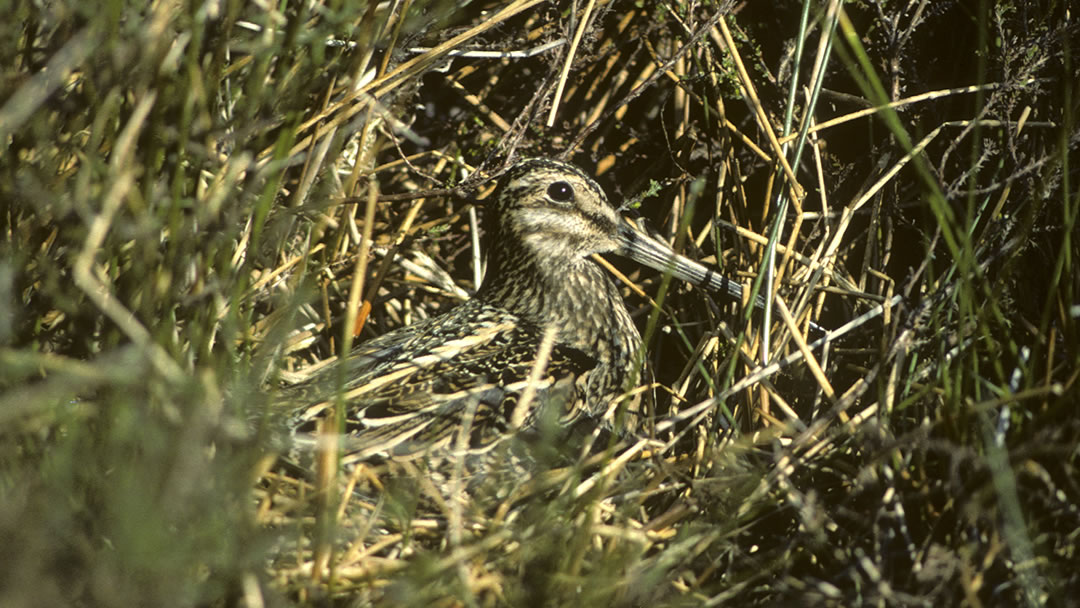
We also have the Birsay moors hide – to see the red throated divers – these can also be seen from the Eynhallow sound so if you went to the Broch of Gurness and had a scan of the sea there’s a good chance you’ll see them there. They can also be seen at the barriers when they are not on the breeding grounds.
There’s also the Eddie Balfour hen harrier hide at Cottascarth; for folk to see them doing their spectacular sky dancing display, a trip there in fine weather in April or May could be very productive.
Away from the RSPB reserves there’s the OIC hide at the Standing Stones of Stenness where you can see really nice views of wildfowl, and a possibility of an otter – there’s also a hide at Loch of Banks which is a public viewing hide, a good spot for waders and wildfowl.
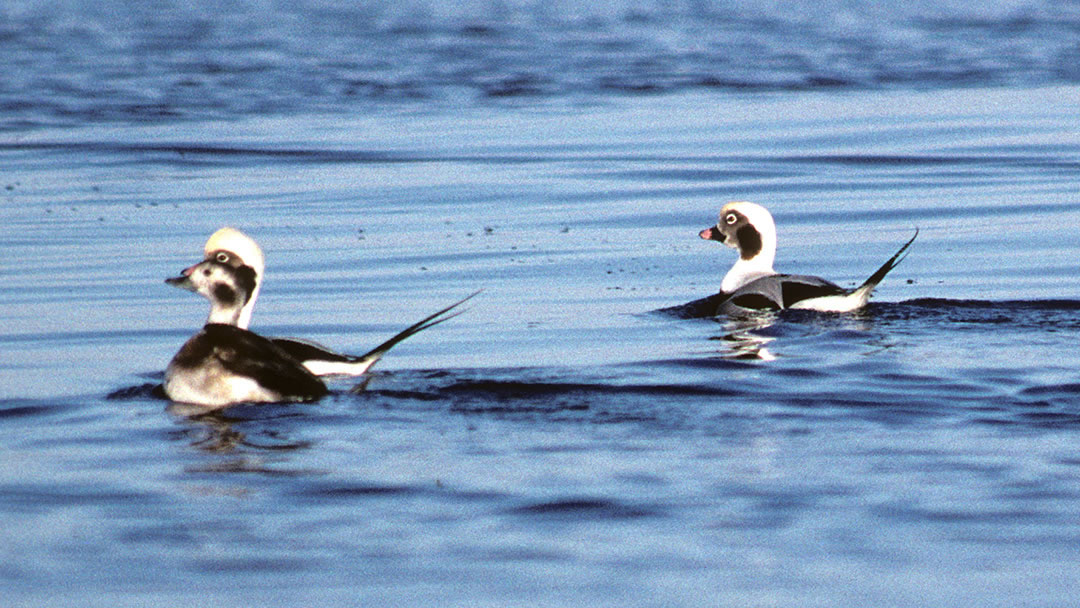
The Peedie Sea in Kirkwall is a fantastic place to see long tailed ducks (pictured above) as is Echa Loch, Burray and Lairo Water, Shapinsay, they come to Orkney in the winter months – they are not a particularly rare bird but they are an awesome looking duck. In April time, the males start to look really spectacular and because these water bodies are quite sheltered during rough weather – you can witness large numbers of these ducks coming to shelter and you can get pretty close, especially at the Peedie sea.
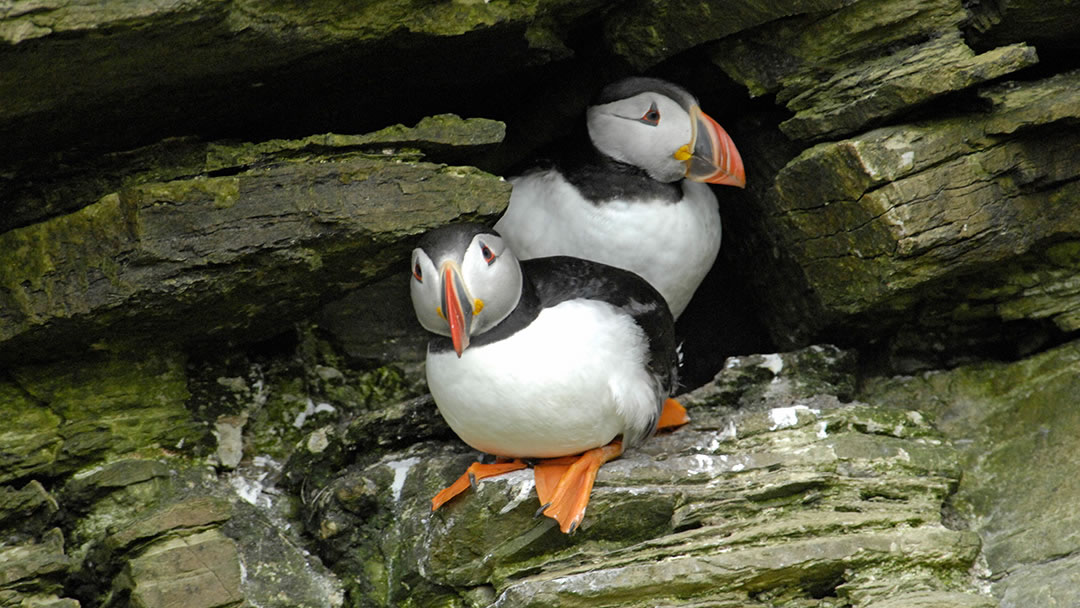
Q. Where’s the best place to go to see puffins?
A. The best place to see puffins (pictured above) is the castle of Burrian in Westray which isn’t that accessible so other places on the mainland where we advise folk to go and try to see puffins – though in much smaller numbers, are the Broch of Birsay, if you go right at the lighthouse, there are puffins that breed there – also the greener slopes and in amongst the rocks at our Marwick reserve.
Puffins are not my favourite, but I’ll put that into some context! They are beautiful birds but they get such a high profile compared to the other auk species. My personal favourite; the black guillemot or ‘tystie’ (pictured below) as it’s known locally, which is actually present all year round in Orkney waters – So Orkney is a really good place to see them!
They are a beautiful bird, black with white wing patches in summer whilst, in winter they look generally frosty. When they call and open their bill they have this blood red gape. They’ve got bright red legs – but they are overlooked because of the clown, that is the puffin! Razorbills and guillemots at close quarters are equally beautiful.
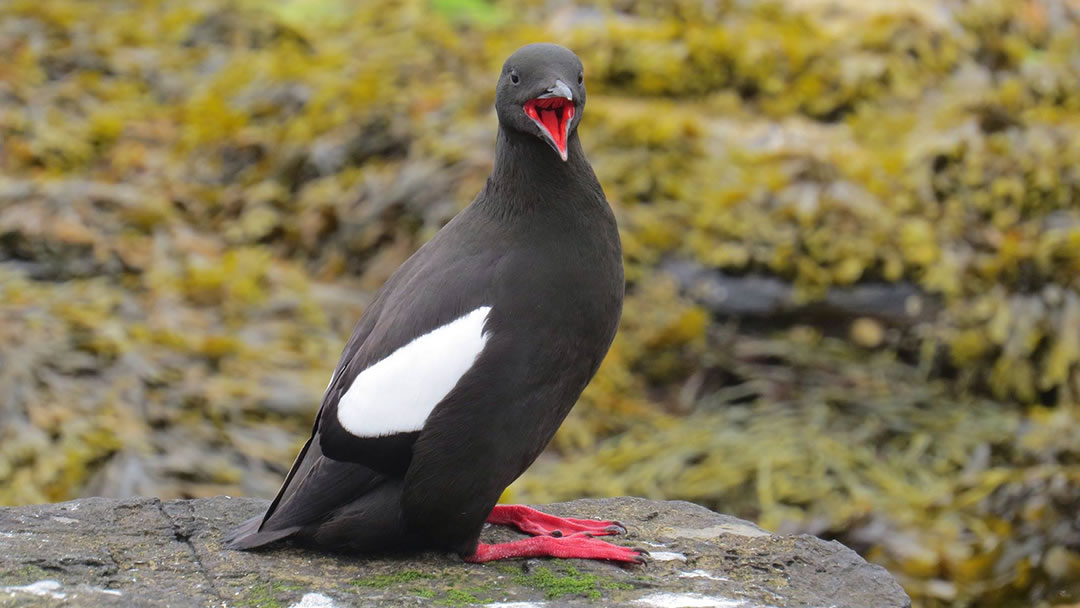
If you want to see Black guillemots or tysties though, they can be seen feeding in Kirkwall and Stromness harbour areas all year round or if you were to walk from Waulkmill bay around to the RSPB reserve at Hobbister you would see them just offshore.
Q. What birds could I expect to see from the deck of the ferry?
A. All your breeding seabirds, things like puffins, razorbills, guillemots, gannets, fulmars soaring along the wave contours –if you’re lucky you might see a Manx shearwater especially in the spring and the autumn. There are a few pairs that nest on Hoy so on an evening sail to Stromness you might have a good chance of seeing them off Hoy. The distinctive Shags (pictured below), all black plumage, long necked bird flying low over the water, are a common sight from the ferry, but I also look out for cetaceans, (whales, dolphins, and porpoises). There are some good species to be seen out there from orcas, to the large minke whale, and the more common harbour porpoise. Atlantic grey seals can be located bobbing in the waves from time to time. As the ferry arrives in Stromness look out for the rarer Harbour or Common seals hauled out at low tide.
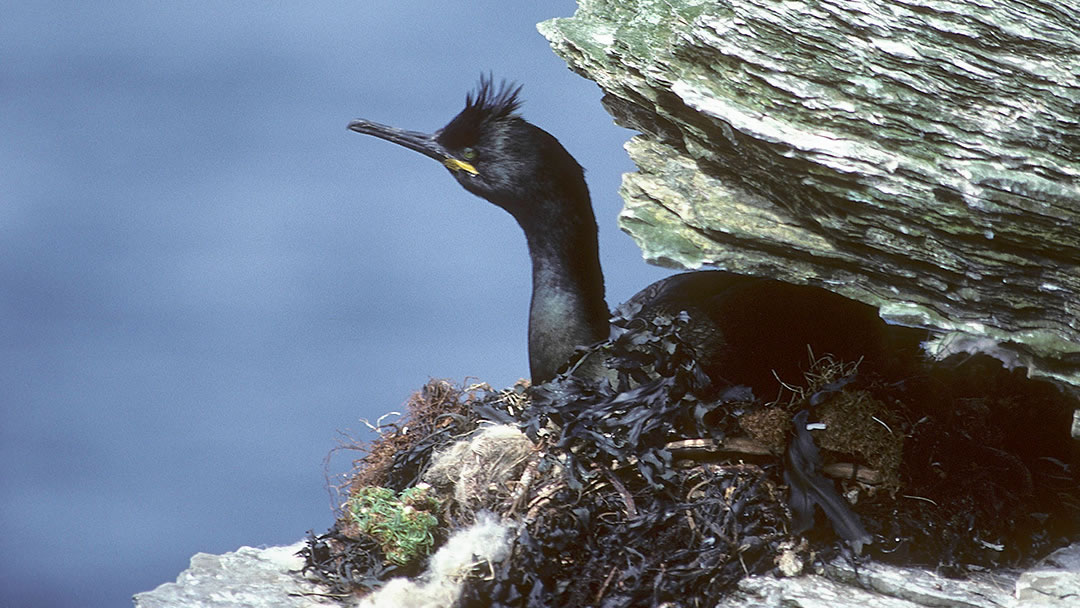
Q. Do you have any concerns about the current environment for birds?
A. I think the natural environment is always under pressure whether it be inappropriate development in sensitive areas, or specific risks like ballast water getting deposited into Scapa flow that can bring non-native species that can out-compete native species.
One of the hot topics at the moment is of course the recent colonisation of stoats to Orkney. Stoats are a native species of the British mainland and they are fantastic animals, they’re really key predators in the food chain but they don’t belong on Orkney. Orkney voles could become a primary target for stoats and the knock on implications could have an effect on species like short eared owls and kestrels that primarily focus their attention on small rodents. The Orkney vole is one of the most common small rodents on the Orkney mainland. It may also have an effect on hen harriers but they hunt a wider variety of prey.
Any non-native species coming into a place like Orkney is of concern. Salmonberry is an example of a non-native, fast growing invasive species that was introduced to Orkney historically from North America to create shelter to enable other less hardy garden species to establish – but when left unchecked it can just run amok. There are some areas of Orkney where this species is spreading into natural habitat areas and though several attempts have been made to try and get rid of it these have been unsuccessful so far, as resources are limited.
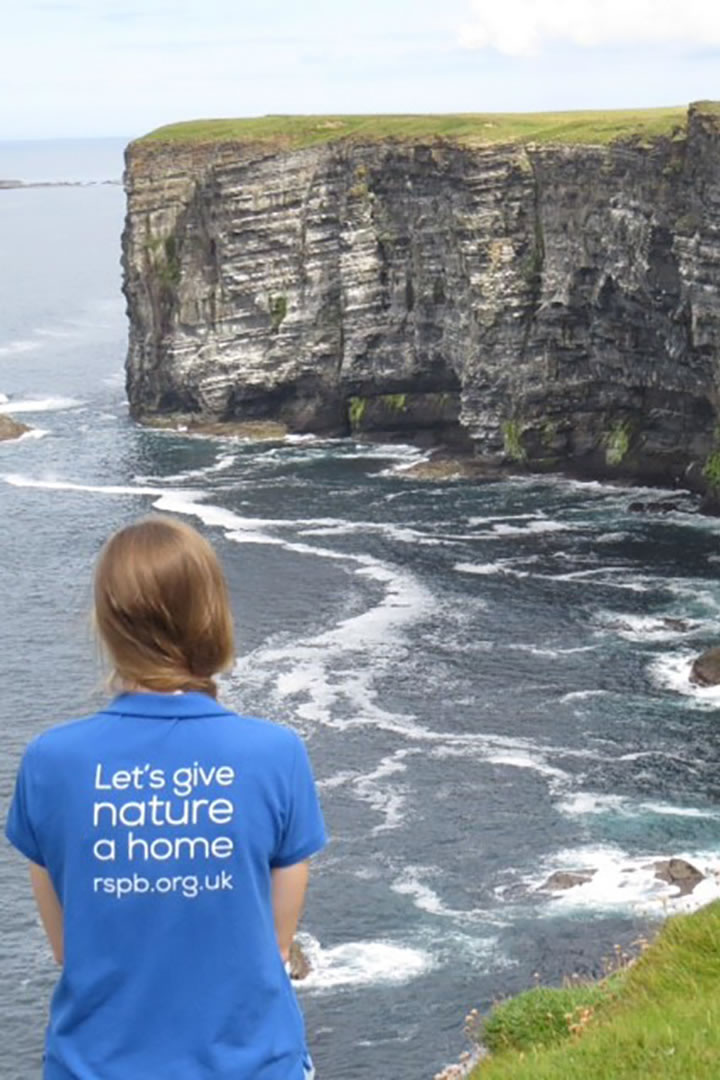
Q. Is there anything that we as members of the public can do to help?
A. People can help map the increasing population of stoats by reporting any sightings to SNH in Kirkwall or the RSPB office in Stromness if you see one. Any concerns regarding our Orkney environment should be voiced by writing to local councillors or indeed MSPs (e.g. concerns such as ballast water). I would encourage folk to become a member of the RSPB, which is the UK’s largest conservation charity. As well as helping to protect the environment for wildlife for future generations we also have many local guided and informative walks throughout the year on Orkney – which are free for members! There is also the Orkney Nature Festival which will running in May.
 By Magnus Dixon
By Magnus DixonOrkney and Shetland enthusiast, family man, loves walks, likes animals, terrible at sports, dire taste in music, adores audiobooks and films, eats a little too much for his own good.
Pin it!